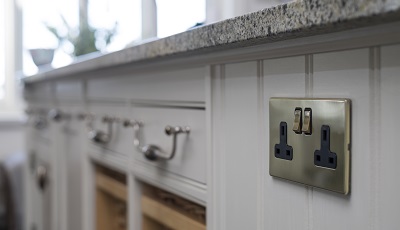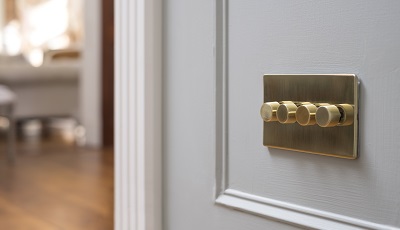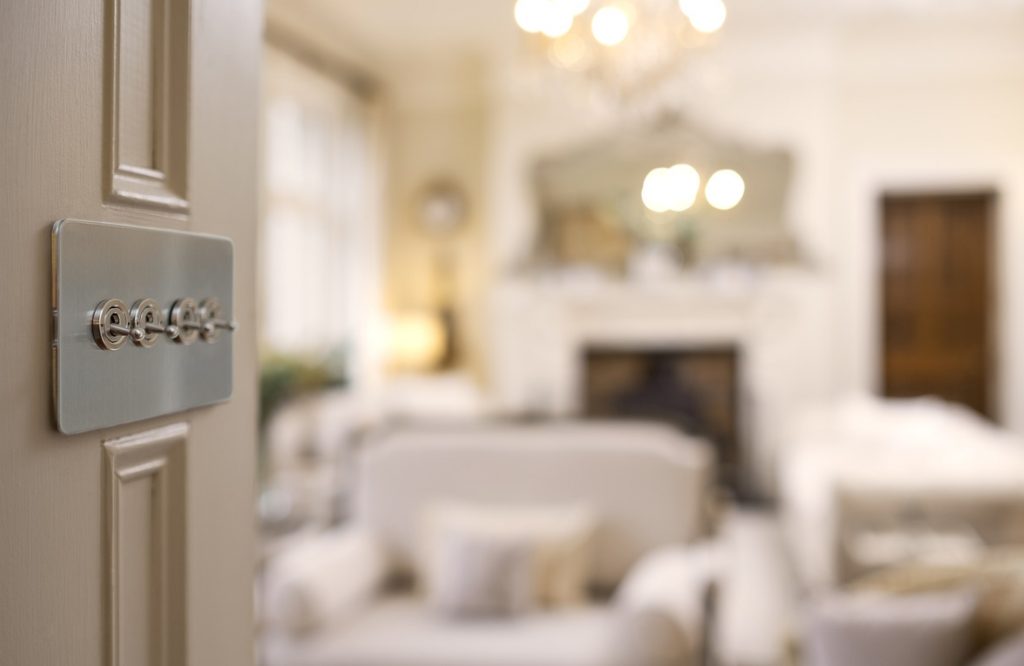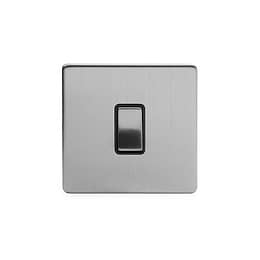What Socket and Switch Do I Need?
What Socket and Switch Do I Need?
 It can be challenging to decide what socket and switch you need in your home. In this blog, we will explore the types of sockets and switches that will benefit your space and your needs.
It can be challenging to decide what socket and switch you need in your home. In this blog, we will explore the types of sockets and switches that will benefit your space and your needs.
Sockets & Charging Points
When planning what switch and socket you need for a project, consideration needs to be given to accessibility and use. The technology driven world we now live in demands ready access to plug sockets and charging points in every room. By providing ample sockets in a room, you build in flexibility for moving furniture, and always ensure access to power. For example table/bedside lamps, charging points, alarm clocks, and entertainment systems.
As a rule of thumb, we recommend a charging point every two meters. If a wall of a room is over two meters in length, then and additional charging point should be added. It is also beneficial to think about balance as well, and placing where possible sockets at equal distance from visual reference points such as a room’s corner etc. Sockets with built in USB charging points can help cut down on the number of plugs needed at every point.
Light Switches
There is an array of different switch types on the market for lighting. The most popular types are Rocker Switches, Dolly/Toggle Switches and Dimmer Switches. When planning a lighting scheme it is important to give consideration to the placement of switches. There is nothing more frustrating than having to leave a room or go down a flight to stairs to switch a light on or off, because somebody did not plan how you navigate your home. This is particularly a common problem for rooms with multiple access. Light switches are placed at one access/entrance, but not another.
It always pays to enter or leave rooms and mark the position of light switches on a plan. Alternatively, if working off plans or drawings, navigate the property with your fingers walking on the plan and think through the light switch requirements for every room and passage way as you go.
Rocker & Dolly/Toggle Switches
The operation and function of rocker and dolly or toggle switch is identical. With the switch being in an ON or OFF position. The rocker switch is the standard switch and the one you are probably most familiar with. It is practical and functional and by far the most common switch sold on the market. This is a popular switch for all types of installations, particularly modern and contemporary styles.
The dolly switch is a style most commonly associated with period and design lead installations. It reflects a style of switch which was often used in prestigious properties in the first half of the twentieth century. Many consider this switch to be more aesthetically pleasing to the eye than the rocker switch, delivering a different user experience through both look and feel.
In recent years we have seen a growth in the use of dolly and toggle switches with brushed or polished chrome finished being used in design lead modern, contemporary or industrial styles.
 Dimmer Switches
Dimmer Switches
The operation of a dimmer switch is generally push for OFF/ON settings and turn clockwise to increase power and brightness. The switches are ideal if you want flexibility and control over your light out-put, from task light to ambient lighting.
Many dimmer switches are designed for old style high energy bulbs and do not always work effectively with low wattage LED bulbs. This shortens their life span significantly. If you are looking to use efficient long-life LED bulbs, ensure you install intelligent trailing edge dimmers.

Dimming Toggle Switches
With a Dimming Toggle Switch, you can combine the function of a dimmer with the aesthetic of a traditional toggle switch. This is done by combining award-winning dimmer technology from Enkin, and pairing with a retractive switch. This results in the Dimming Toggle Switch from Soho Lighting Co.
Not only is this a great way to blend with your interior design, but it effortless works as a multi-location dimmer. By pressing up or down, you can turn the lights on and off, with a longer press you are able to dim, returning the retractive switch the passive position, it allows another switch to take control of the light.








